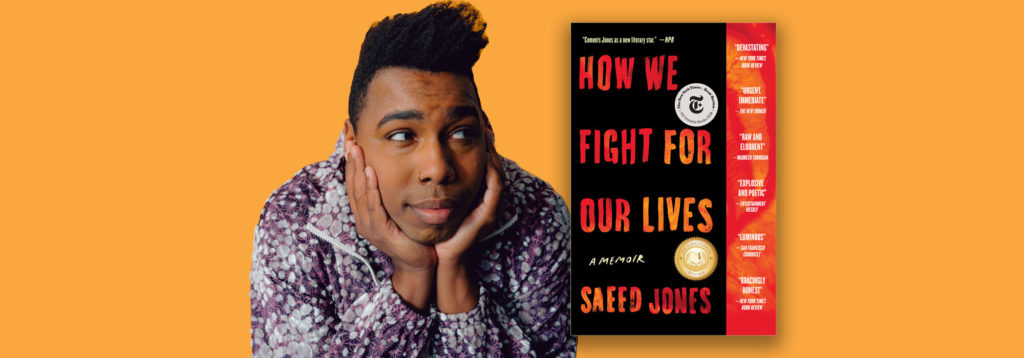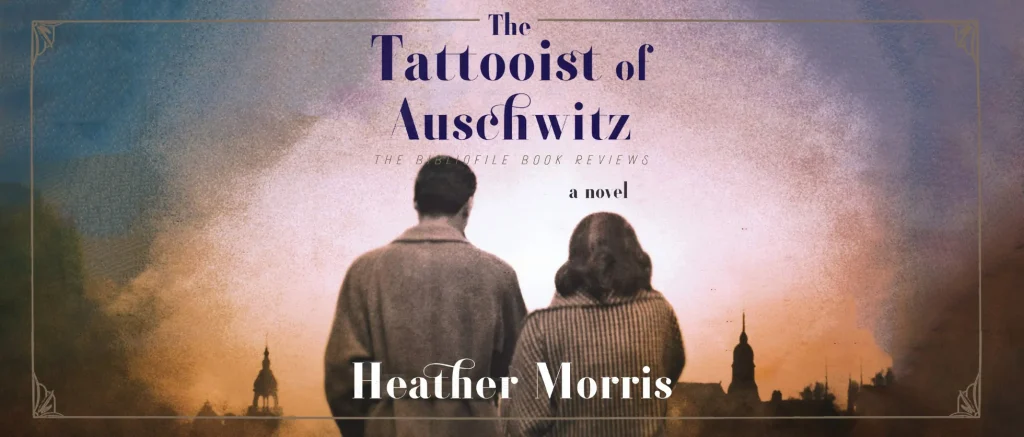November: Out of Five Cats
Welcome to Out of Five Cats November!
Here at The Book Shelf, we love reading, publishing, and cats. So, let’s combine all three—at the end of each month, we will post a roundup of our nonfiction reads for you to sample.
This November, we read some extraordinary nonfiction books, some being new releases and others long overdue. Last month, we started Out of Five Cats. If you want to see the novels we loved in October, check out our blog here.
How We Fight for Our Lives by Saeed Jones

Review by Olga Bialasik
I went into this book without any prior knowledge about it, except that it was a memoir by a Black, gay poet. I’d been meaning to read more nonfiction and more poetry, so this seemed like the perfect transition for my reading habits. And it truly was—Saeed Jones has a strikingly beautiful way of writing that blurs the styles and languages of genres, both prose and poetry.
Reading the audiobook, narrated by the author himself, was the best decision I could have made. Just like slam poetry is elevated by the poets’ performance, so is this memoir intensified by Jones’ passionate yet tender retelling. Covering just over a decade, 1998 to 2011, his teenage years to mid-twenties are painted in vibrant colours.
Jones details his first crushes on boys and encounters with men; the fissures in his family due to religious disagreements; his mother’s health problems and financial difficulties; the desire to speak aloud the truth your family wishes to keep quiet; and the pursuit of art in a world where people like Saeed Jones are often killed before they have time to create.
Although a generous length of this memoir is dedicated to sexual discovery and examining the fetishisation of Black boys and men by white gay men—through emotional questions reminiscent of diary entries rather than concrete facts—every thread in the book begins and concludes with Jones’ relationship with his mother. It is the true heartline of the story: a love letter to a Black, single mother and the raw nostalgia, grief, adoration, and regret entangled within it.
A fair warning: this book contains a few graphic scenes of sexual and violent nature. But they are worth stomaching for the complex exploration of intersecting Blackness, sexuality, masculinity, and poverty that make a person simultaneously unseen and hyper-visible in the American South.
There are uncomfortable parts that will leave you shaking your head as you dread what’s coming and painfully poignant scenes that are sure to soak a few tissues (so keep them on hand!). Every line is incisive and moving, disturbingly honest and gorgeously formed. I can’t wait to read Saeed Jones’ poetry after this powerful memoir.
I rate this book 5/5 cats.
Sista Sister by Candice Brathwaite

Review by Soria Nicholson
As a black woman, Brathwaite’s book touched me more than I had expected. No experience is monolithic and Sista Sister captures fragments of my life as a black female in ways I never expected.
“Slowly, things are changing, and as ever, we have the internet to thank for this.”
Candice Brathwaite
Brathwaite’s cleverly constructed book of essays provides valuable insight into life as a young black female. Throughout the book, she recounts her stories over the years with sprinkles of humour as well as sincerity. The reader is left with short lessons that Brathwaite wishes somebody had taught her. Brathwaite delves into various topics such as navigating the realms of social media to colourism within relationships.
The book contains anecdotes about Brathwaite’s past and her harrowing journey from childhood to womanhood. Her blackness is antagonized, demonized, and sexualized. Moreover, It is so relatable to many black females. Through trials and tribulations, there is encouragement. In Lesson 10: Call Me Cupid – On Self Love, Brathwaite says:
“I had wasted a lot of energy trying to get my 4c hair to bend to my ungodly will, but no matter how much I tried to get it to drop towards the floor, it seemed intent on growing towards heaven.”
Candice Brathwaite
In Brathwaite’s lesson, she recalls her journey to loving and appreciating her afro-textured hair. As many black females know, our hair has been and always will be a part of our identity. Thus, this is especially difficult to manage when the straight, blonde beauty standard is always near. For black women, our wired hair is unique and may take us time to accept.
Brathwaite has been labelled as unprofessional, ‘a nappy’ by other black folks, and judged. Yet, she has a sentiment of pride in wearing her hair in its natural form. Through the act of shaving her hair off regains strength and control over her black identity. Sista Sister emphasises how our value does not equate to hair.
“But throw blackness into the mix, and now we aren’t talking about a space; we’re talking about a crevice, a slither of an opening that you need to get good at making yourself small enough to get through.”
Candice Brathwaite
In addition, Brathwaite delves into the complexities surrounding ‘blackness.’ Black women exist at the bottom of the romantic hierarchy. As a matter of fact, it didn’t take long for me to realise this during my time at school. Brathwaite relates her memory of seeing black girls ranked below ‘A corpse’ by one boy. Comparatively, she reminds us that self-love is more important than any amount of external validation.
Brathwaite states that she lost out on job roles to lighter-skinned women. Uniquely, she centres on professionalism and colourism later in the book. Many of us understand the struggle of establishing ourselves in areas commonly taken up by white people. The publishing and media industries are great examples. Brathwaite, as a writer and TV presenter, knows how much effort it took to get to the top.
“Now more than ever, there is a plethora of dark-skinned black women utilizing platforms like YouTube to share and discuss the content and experiences that speak directly to us.”
Candice Brathwaite
Brathwaite writes about social media paving the way for black voices. She notes that more people look like her taking centre stage. In other words, black women with darker skin, not just those who would pass the brown paper bag test. If you’re wondering what this is – it was slavery, a practice which deemed a person’s privileges based on whether they were lighter or darker-skinned than a brown paper bag. Again, the reason her words resonate so much with me is the knowledge that, in this test, I would have failed.
If you are a person of colour looking for a book to convey the intricate experience of growing up and feeling marginalized in British society, Sista Sister is the one for you. This is a brilliant read for POC and for anyone who wants to educate themselves. In the light of wisdom and hard truths, Sista Sister will be one of the most important books you will ever read.
I rate this book 4.5/5 cats.
The Tattooist of Auschwitz by Heather Morris

Review by Shelby Jones
“To save one is to save the world.”
Heather Morris
I caught sight of Heather Morris’ work in a bookshop this month and began with Lale Sokolov’s story. I read this book in two days – captivated and heartbroken, humbled and inspired. Morris can convey the spirit of Sokolov on the first page. This book teaches you about the power of human love in the face of such horrors.
Not to mention, it took Heather Morris 3 years to write Lale’s story. Lale was the Tatowierer, The Tattooist of Auschwitz and Birkenau. He recounts the perks of being the Tatowierer – extra rations, better sleeping conditions, freedom around the camp, money, and possessions of those who perished in the gas chambers. Unfortunately, with these perks, Lale gave almost all away to the rest of the prisoners in the camp.
Lale and Gita meet as he gives her her tattoo. Together with this, I could feel the transformation in Lale’s spirit. The power of human emotion brought me to tears. Uniquely, I understand that hope is found within the most brutal and vile environments.
The main themes of this book are human compassion and resilience. Thus, I could feel the inner turmoil and strength of Lale and Gita throughout the novel. Correspondingly, it felt like the entire book was so dark that Lale and Gita were the light leading me through it.
In the first place, Morris’ writing style is captivating. She builds the atmosphere well without being overly graphic for the modern reader. Equally, Morris treated the story with so much respect and grace that I felt changed as a person for reading it.
Coupled with an Author’s Note at the end, you understand the weight of Lale and Gita’s story. In light of recent events, I believe stories like this teach us more about ourselves than any fiction story could.
I rate this 4.5/5 cats.
That’s it for this month! What nonfiction have you read recently? Let us know on Twitter or Instagram. Here are some books we’re excited about and hoping to read in December, curtesy of our New November Releases Blog:
Toil and Trouble: A Woman’s History of the Occult by Lisa Kröger and Melanie R. Anderson
The Path of Peace: Walking the Western Front Way by Anthony Seldon
Stay tuned for the next blog, and follow us on social media for a reminder in case you forget!